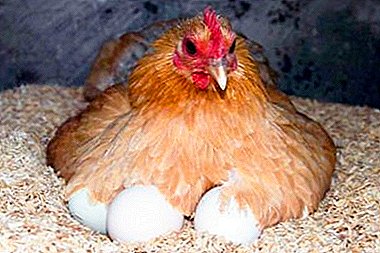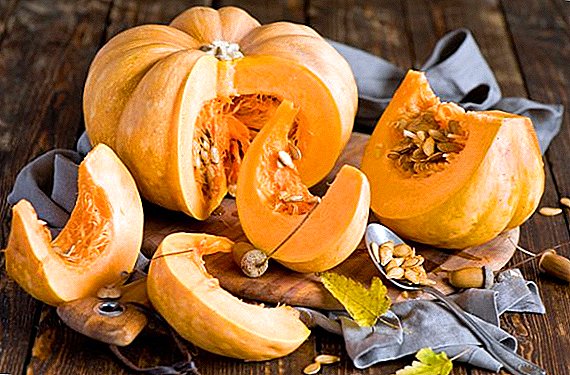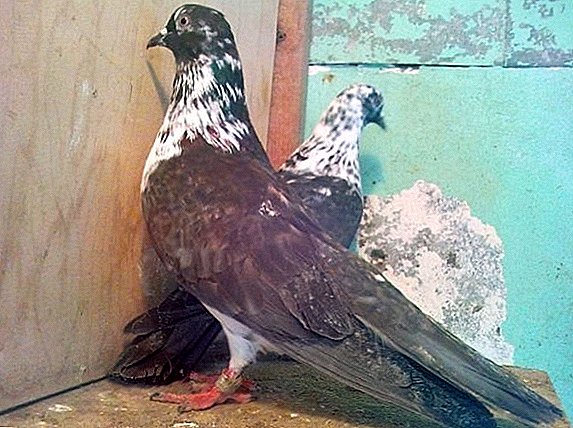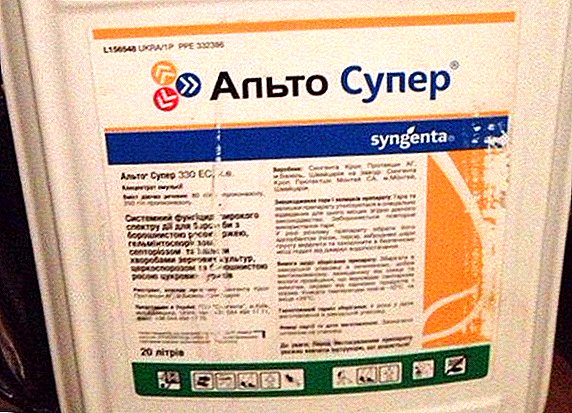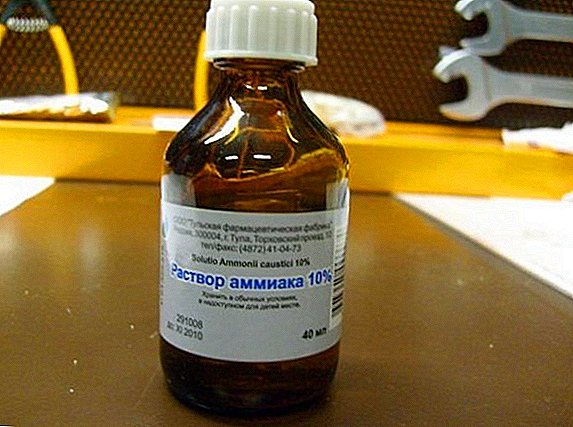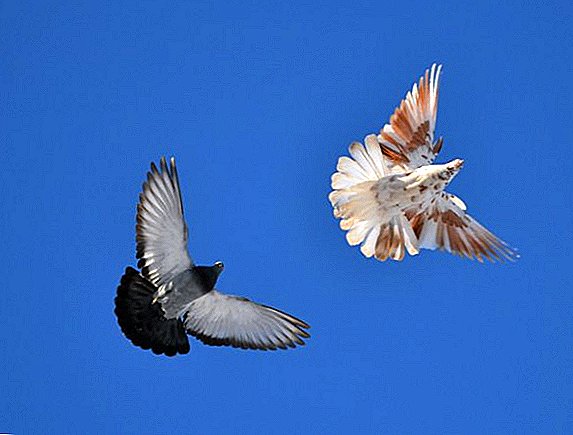 Many of us love to feed pigeons or other birds. But do you know what consequences may be waiting for you? Now we will talk about the most common diseases of pigeons transmitted to humans.
Many of us love to feed pigeons or other birds. But do you know what consequences may be waiting for you? Now we will talk about the most common diseases of pigeons transmitted to humans.
Diseases of pigeons: diagnosis, treatment and prevention, the danger to humans
In fact, there are a very large number of various diseases, many of which can develop in the human body.
Ornithosis
Ornithosis called acute infectious disease, the main source of which are wild and domestic birds. In most cases, the disease manifests itself in the cold season.
 Most often ornithosis occurs in pigeons.. Moreover, this disease is often the answer to the question why doves pigeons die. On the first day of the disease, young animals experience symptoms such as shortness of breath and diarrhea, which develop over time and can lead to the death of chicks (usually at the age of 24 weeks).
Most often ornithosis occurs in pigeons.. Moreover, this disease is often the answer to the question why doves pigeons die. On the first day of the disease, young animals experience symptoms such as shortness of breath and diarrhea, which develop over time and can lead to the death of chicks (usually at the age of 24 weeks).
If you have noticed similar signs of ornithosis in your pigeons, then this is a serious reason for panic. Infected young individuals grow poorly, poorly fledged and poorly eaten. In adult birds, the disease can manifest as shortness of breath, runny nose, and wheezing. Also often observed conjunctivitis, accompanied by profuse tearing.
You can not guess why the pigeon is trembling, but as soon as the bird begins to sneeze and constantly shake its head, wanting to get rid of nasal discharge, you should think about the possibility of such a disease. After a few days without proper care, the pigeon is draining and will perish.
Did you know? For the first time, this disease was described by T. Jürgensen, calling it "SARS". It happened in 1879. Around the same time, D. Ritter established its relationship with the diseases of parrots.
 The most effective agents in the treatment of ornithosis are azithromycin and erythromycinprescribed in moderate therapeutic doses. It is also possible to use tetracycline antibiotics.
The most effective agents in the treatment of ornithosis are azithromycin and erythromycinprescribed in moderate therapeutic doses. It is also possible to use tetracycline antibiotics.
The duration of the course depends on the clinical effect, and as a means of pathogenetic treatment, detoxification therapy is performed using bronchodilators, vitamins, oxygen.
When treating poultry, regulation of the number of individuals and limiting contact with them is not excluded.
Important! You should never forget about the observance of veterinary and sanitary rules when importing poultry from other countries, their maintenance in poultry farms and zoos.
Sick birds are often destroyed and rooms are disinfected. All personnel must be provided with protective clothing and disinfectants.
As for people, patients may be hospitalized for clinical and epidemiological indications, and for persons who are at risk of infection, medical observation can be established for up to 30 days.
Emergency prophylaxis is carried out for 10 days, using doxycycline and tetracycline.
Human infection with ornithosis occurs by inhalation of dust, dried particles of excrement and discharge from the birds beak. The incubation period of the disease lasts from 1 to 3 weeks, and the infection itself can be acute or chronic.
It all starts with a rapid increase in temperature, chills, increased sweating, headache, pain in muscles and joints. A sick person may complain of weakness, sleep disturbance, sore throat, and constipation. In some cases, nausea and diarrhea may occur.
On examination, a conjunctivitis is often found in patients, and in the first week of the disease a hepatolienal syndrome is formed. The heart rhythm is muffled, there is a tendency to bradycardia and lower blood pressure. Insomnia, irritability, tearfulness, apathy, or adynamia may also develop.
The first sign of lung damage is a cough (appears on 3-4 days of illness).
Most often, the infection affects the brain, spleen, liver, and myocardium. If conditionally pathogenic flora joins in the development of the disease, large-focal or lobar pneumonia may occur.
Trichomoniasis
Trichomoniasis is another widespread disease of wild and domestic pigeons. It is caused by a flagellated microorganism called "trichomonas". A characteristic feature of this pathogen is the ability to live in drinking water, but drying out moisture leads to the rapid death of harmful microorganisms.
 There are several forms trichomoniasis, but most often the disease is manifested by a lesion of the pharynx, mouth and esophagus of birds. Infected pigeons become fixed, constantly sitting in a nest with wings down and mouth open.
There are several forms trichomoniasis, but most often the disease is manifested by a lesion of the pharynx, mouth and esophagus of birds. Infected pigeons become fixed, constantly sitting in a nest with wings down and mouth open.
Because of the blockage of the entrance to the larynx, it becomes very difficult to breathe, and the dense yellow formations on the mucous membrane of the oral cavity (the so-called "yellow plug") cause discomfort. In some cases, such yellow growths can be noticed through the open beak of the bird.
A few days later, due to the proliferation of the yellow cork, suffocation occurs, and the pigeons die. Among other no less characteristic signs of trichomoniasis, weakness, bonding of plumage and inability to flight should be noted.
If your assumptions are confirmed, and it turns out that the pigeons are really sick with trichomoniasis, you will have to immediately begin treatment, which uses modern medications.
 One of them is "Trichopol", which is used in the form of lotions on the place of removal of growths in the oral cavity, by massage the contents of the goiter. In addition, the medicine can be instilled with a pipette, not only in the bird's beak, but also in the goiter.
One of them is "Trichopol", which is used in the form of lotions on the place of removal of growths in the oral cavity, by massage the contents of the goiter. In addition, the medicine can be instilled with a pipette, not only in the bird's beak, but also in the goiter.
Important! It is necessary to try by all means to avoid the ingress of fluid into the lungs.
As a preventive measure, it is recommended to add "Trichopol" (Metronidazole) to drinking water. You can also use "Iodoglycerin" and Lugol solution.
Often, human infection with trichomoniasis occurs through sexual contact., although the non-sexual mode of transmission is no less common. In particular, this disease can be attributed to the group of diseases transmitted to humans from pigeons. If the infected bird had contact with you or your belongings, then there is a serious chance of infection.
 Trichomonas can normally exist in a humid environment for up to several hours, staying on the dishes, walls of bathrooms or on the toilet seat.
Trichomonas can normally exist in a humid environment for up to several hours, staying on the dishes, walls of bathrooms or on the toilet seat.
In the male, the disease mainly occurs without any signs, but it can easily lead to infertility, urethritis or chronic prostatitis.
Infected women are forced to fight chronic inflammation, which sometimes causes tubal infertility or the development of cervical cancer.
Campylobacteriosis
Campylobacteriosis belongs to the group of infectious diseases of animals and humans, which are characterized by varying degrees of severity and polymorphism of manifestations. The causative agent of the disease are bacteria of the genus Campylobacter, which asymptomatically parasitize the body of pigeons.
Did you know? For the first time these microorganisms were detected in people with diarrhea in 1884.
 There are a number of species of these bacteria that are specific enough for different species of animals. However, not all of them are pathogenic.
There are a number of species of these bacteria that are specific enough for different species of animals. However, not all of them are pathogenic.
In birds (in particular, in pigeons), the disease can provoke septicemia, chronic respiratory diseases, synovitis (inflammation of the ligaments, which often leads to claudication), pericarditis (inflammation of the pericardium) and salpingitis (inflammation of the ovary).
but most often campylobacteriosis does not manifest itselfand the dove seems completely healthy. In humans, campylobacteriosis manifests itself in the form of diarrhea, which is often complemented by fever, dysentery, pinkish skin rash and mucous membranes.
In the treatment of the disease, rehydrating agents, probiotics, enzyme preparations are used, and in severe cases - antibiotics.
In most cases, the use of drugs against diarrhea is sufficient, but in severe cases of the disease, therapy with tetracycline and chloramphenicol may be necessary.
If the disease is diagnosed in a pigeon or other poultry, then their feed begins add furazolidone or give water soluble nifurprazin along with drinking.
 Clinically healthy, at first glance, birds, along with feces, secrete a certain amount of campylobacter. To a person, the disease is transmitted through dropping residues into the mouth, possibly by drinking contaminated water or food.
Clinically healthy, at first glance, birds, along with feces, secrete a certain amount of campylobacter. To a person, the disease is transmitted through dropping residues into the mouth, possibly by drinking contaminated water or food.
The incubation period is 12-72 hours. Once in the human body, the bacteria cause a variety of symptoms in the gastrointestinal tract.
So, the patients clearly manifest abdominal pain, nausea, and vomiting and diarrhea a little later. The liquid stool is characterized by an extremely unpleasant odor and blood impurities.
In addition, there is an increase in body temperature and worsening the overall condition of the body. These symptoms last no longer than three days. In addition, there may be pain in the muscles and joints.
In some people, the disease becomes chronic, and the symptoms in such cases are not so pronounced: sometimes pain in the abdomen and nausea worries, which is complemented by loose stools. Over time, a person begins to lose weight, he becomes weak and increases fatigue.
Sometimes the joints can ache and become inflamed. Women are often worried about itching in the genitals and uncharacteristic discharge. If you start the disease, the infection will cause an abscess on the liver and pancreas.
Did you know? Pigeons as poultry began to breed even 5,000 years ago. Considering that these birds can fly at a speed of 100 km / h, in the old days they were used as postmen.
Listeriosis
 Listeriosis - zoonotic infectious disease with a polymorphic clinical course. This disease is caused by the bacterium Listeria monocytogenes, which is a mobile, optional-anaerobic short stick. It does not form spores and can invade cells, forming a capsule and facilitating latent infection.
Listeriosis - zoonotic infectious disease with a polymorphic clinical course. This disease is caused by the bacterium Listeria monocytogenes, which is a mobile, optional-anaerobic short stick. It does not form spores and can invade cells, forming a capsule and facilitating latent infection.
For this type of disease is characterized by a long period of their course, with no clinical signs usually can not be found. Visible symptoms manifest themselves only in weakened pigeons, in which the disease proceeds with complications: there are disturbances in the central nervous system, and the bird quickly dies.
Important! In order to make an accurate diagnosis to a person, it is necessary to conduct a bacteriological examination of blood, mucus from the nose and pharynx, cerebrospinal fluid, newborn feces of the newborn or amniotic fluid in pregnant women.
Treatment of pigeons for listeriosis is ineffective; therefore, most often sick birds are destroyed or euthanized in a veterinary clinic. As for prevention, it comes down to limiting the contact of wild birds with poultry (some dovecotes on the perimeter cover the net).
 It is also important to adhere to veterinary-sanitary and sanitary-hygienic standards, especially in populated areas and at facilities that are associated with animal husbandry (in the case of pigeons, it is necessary to periodically disinfect pigeon houses).
It is also important to adhere to veterinary-sanitary and sanitary-hygienic standards, especially in populated areas and at facilities that are associated with animal husbandry (in the case of pigeons, it is necessary to periodically disinfect pigeon houses).
A person with listeriosis is prescribed a tetracycline, penicillin or ampicillin group of antibiotics, and only a doctor can determine the required dosage and duration of treatment. In addition, the patient is isolated from others and prescribed bed rest.
If listeriosis has led to complications in the form of meningitis, then benzylpenicillin sodium salt can help with 75-100 thousand U / kg, which is administered intravenously every four hours.
Pathogen therapy is carried out according to generally accepted principles. For example, in the eye-glandular form, a 20% sodium sulfacyl solution and a 1% hydrocortisone emulsion are topically applied.
For prophylactic purposes, they analyze the morbidity of animals and people, identify groups of increased risk and factors that may contribute to the spread of infection, both in everyday life and in hospital conditions.
 Listeriosis, like many other diseases of pigeons, is transmitted to humans with mucus and faeces of birds, that is, through the faecal-oral, airborne or contact routes.
Listeriosis, like many other diseases of pigeons, is transmitted to humans with mucus and faeces of birds, that is, through the faecal-oral, airborne or contact routes.
Interestingly, bacteria for quite a long time can store pathogenicity in dried mucus, as well as in particles of feces or on feathers. However, it is not always when Listeria enters the human body that causes the disease.
In diseased people, listeriosis occurs according to the type of allergic reaction, and in acute cases the body temperature rises. The symptoms of the disease manifest themselves in different ways: in some cases, a rash just appears, in others, the lymph nodes increase and a sore throat develops.
In some particularly difficult situations, Listeria can affect the central nervous system, causing meningitis and encephalitis. In most cases, the disease occurs in an erased form, with occasional fever and nausea. If pregnant women become infected with Listeria, the infection will be transmitted to the child.
Tularemia
 Tularemia - This is another dangerous disease that can be transmitted to humans from pigeons. The causative agent of this disease is a small bacterium of the genus Francisella, which is widespread and has a high level of persistence in the environment.
Tularemia - This is another dangerous disease that can be transmitted to humans from pigeons. The causative agent of this disease is a small bacterium of the genus Francisella, which is widespread and has a high level of persistence in the environment.
Poultry, and pigeons in particular, are most often an asymptomatic source of tularemia bacteria. In the acute course of the disease, they may have a weak appearance and refuse to eat.
No special treatment regimen for tularemia in poultry has yet been developed, so pigeon owners can only use the most common antibacterial drugs (nitrofurans, antibiotics and sulfonamides).
As for prevention, all that can be done to prevent the spread of infection is to isolate sick individuals in time and to disinfect pigeon house. In humans, the disease is treated with antibiotics, and those at high risk of infection are recommended to be vaccinated every 5 years.
 Practically anyone can become infected with bacteria by direct contact with sick pigeons or by drinking contaminated water and food. It should be noted that our body is very susceptible to tularemia, although the bacterium is not transmitted from person to person.
Practically anyone can become infected with bacteria by direct contact with sick pigeons or by drinking contaminated water and food. It should be noted that our body is very susceptible to tularemia, although the bacterium is not transmitted from person to person.
The presence of the disease is accompanied by fever and chills. Also, patients often complain of weakness, body aches, headache and loss of appetite.
In the initial stages of the development of the disease, the face becomes red and swollen, a rash appears on the skin and mucous membranes of the mouth, and pain in the abdomen periodically causes pain. In humans, tularemia can occur in the pulmonary form, with a dry cough, wheezing and chest pain. There are frequent cases of secondary pneumonia.
Did you know? Since 1996, a law has been in force in Munich that bans citizens from feeding pigeons. For the same offense in Hong Kong, you will face a fine or even eviction from an apartment.
Pseudotuberculosis
 Pseudotuberculosis (or, as it is also called, “false tuberculosis”) - This is a chronic disease of animals and birds, which, due to pathological changes, is similar to human tuberculosis and is characterized by the appearance of nodular formations in the affected tissues and organs. Pathogens can cause a variety of symptoms.
Pseudotuberculosis (or, as it is also called, “false tuberculosis”) - This is a chronic disease of animals and birds, which, due to pathological changes, is similar to human tuberculosis and is characterized by the appearance of nodular formations in the affected tissues and organs. Pathogens can cause a variety of symptoms.
This disease is caused by exposure to pastarela pseudotuberculosis, which occurs in wild and farm birds. In most cases, this disease occurs against the background of other diseases of birds: for example, chronic intestinal disorders.
The characteristic signs of pseudotuberculosis are: depressed birds, ruffled plumage, difficulty breathing, abnormal head position, disturbance of the functions of internal organs. The final diagnosis can be made only when there are results of bacteriological studies confirming the fact of the presence of the disease.
Oddly enough, but any special treatment for pseudotuberculosis in pigeons simply does not exist. In most cases, broad-spectrum antibiotics are used, but sick birds still often die, due to the rapidly developing intoxication of the body.
Treatment of infected people is carried out in cases of lesions of the external lymph nodes and is reduced to their removal. If there are superficial abscesses, it is recommended to open them and remove pus. In severely neglected cases, it is very difficult to cure the disease, and sometimes it is simply impossible.
To prevent the occurrence and spread of the disease, it is necessary to carry out thorough and regular disinfection of the pigeon house, as well as to promptly exterminate rodents. In addition, with the slightest suspicion of pseudotuberculosis, at least twice a month it is necessary to conduct a clinical examination of the bird.
Если появляются сомнения в здоровье отдельных особей, их необходимо изолировать и провести соответствующие бактериологические исследования.
Псевдотуберкулез голубей передается человеку - это факт. Infection occurs mainly through water and poorly processed meat, dairy and vegetable products, even those that were stored in the refrigerator.
 Infection from another person is almost impossible, so patients do not need isolation. The development of the disease is very fast, and the first symptoms appear already on the second or third day after the person has eaten contaminated food.
Infection from another person is almost impossible, so patients do not need isolation. The development of the disease is very fast, and the first symptoms appear already on the second or third day after the person has eaten contaminated food.
Patients often complain of sore throat, chills, weakness and fever up to 38-40 °. Often there is a rash, which strongly resembles scarlet fever and is mainly located around the joints.
Important! In people with immunodeficiency, the process is generalized, and death is quite possible.
Simply put, pseudotuberculosis has no symptoms of its own and rather resembles other infectious diseases: viral hepatitis, scarlet fever or ARVI.
Cryptococcosis
 Cryptococcosis is another infectious disease caused by the vital activity of the yeast fungi Cryptococcus neoformans. Their favorite habitat is a soil that was fertilized by bird droppings. It is also easy to catch the infection from pigeon nests.
Cryptococcosis is another infectious disease caused by the vital activity of the yeast fungi Cryptococcus neoformans. Their favorite habitat is a soil that was fertilized by bird droppings. It is also easy to catch the infection from pigeon nests.
The symptoms of cryptococcosis in pigeons are manifested in the form of decreased appetite (within 1 to 2 weeks) and difficulty in swallowing food. In severe cases of sickness in sick individuals, feathers on the head and under the beak stick together with brown-gray crusts, due to which it is sometimes difficult for the bird to open its beak.
Moreover, seals the size of a hazelnut appear in the region of the jaw joint. The mucous membrane of the oral cavity is swollen and contains a mucous-cheese-like mass. The center of this mass is somewhat compacted and consists of dead tissues.
Important! Difficult swallowing after a few weeks can lead to a complete rejection of food, because of which the pigeon is greatly weakened.
 The disease is accompanied by depression and narrowing of the palpebral fissure, and at the progressive stage of the disease, the inflammatory process passes to the esophagus.
The disease is accompanied by depression and narrowing of the palpebral fissure, and at the progressive stage of the disease, the inflammatory process passes to the esophagus.
Specially developed treatment regimen for cryptococcosis in pigeons does not exist. As with histoplasmosis, the birds are treated with antimycotic drugs.
Also, nothing concrete can be said about preventive measures. All you can do is isolate the diseased pigeons and disinfect the dovecote.
The fungus is transmitted to humans through the respiratory tract, and in 30% of cases the disease proceeds without any symptoms. However, in the remaining 70% there is fever, cough and hemoptysis.
Cryptococcosis begins with pulmonary symptoms, but if you do not start treatment in a timely manner, it can cause brain damage (meningitis, meningoencephalitis).
In the chronic form of the disease, a person has a cough with blood sputum, chest pain, episodic fever and even hallucinations.
Toxoplasmosis
Toxoplasmosis - a disease characteristic of all types of animals, birds and even humans. It is caused by the effect on the body of a protozoal pathogen, a unicellular mobile parasite, which has a complex body structure.
 Under the influence of sunlight, Toxoplasma quickly die. Also, they are affected and disinfectant preparations that help to cope with the parasite within 5-10 minutes after use.
Under the influence of sunlight, Toxoplasma quickly die. Also, they are affected and disinfectant preparations that help to cope with the parasite within 5-10 minutes after use.
Did you know? For the first time Toxoplasma was discovered in 1908. It happened in North Africa when scientists examined a sick Gondi rodent. That is why the unicellular creation and received the name "Toxoplasma Gondi."
Outbreaks of toxoplasmosis in pigeons are observed in different countries and have been proven by more than one study. How exactly a bird is infected under natural conditions has not yet been determined, but it is clear that the main way of transmission of the disease to pigeons is their consumption of contaminated food and water.
Toxoplasmosis in pigeons is accompanied by circular motions, a shaky gait and refusal of food. Paralyzes are also not excluded. About 60% of sick individuals die, and in the rest, the disease becomes chronic. Such birds periodically release the pathogen into the environment along with the droppings, which often infect humans.
Special treatment of pigeons for toxoplasmosis has not yet been developed, and prevention is based on timely disinfection and the destruction of rodents, which are often carriers of the disease.
When injected into the human body, Toxoplasma is transported through the blood and lymphatic pathways throughout the body, stopping in various organs and tissues.
Having reached the cells, the causative agent finds there favorable conditions for further reproduction, and as a result of its vital activity, an inflammatory process of organic origin appears (caused by cell death, local tissue necrosis and vascular occlusion).
 If the defenses of the human body are at a high level, the reproduction of unicellular parasites stops, and further cell destruction does not occur (the disease process calms down).
If the defenses of the human body are at a high level, the reproduction of unicellular parasites stops, and further cell destruction does not occur (the disease process calms down).
That is why the majority of infected people the disease occurs in latent or chronic forms, and in most cases absolutely asymptomatic.
The acute form of the acquired disease (also a person can be born already infected) is quite rare (only in 0.2-0.3% of patients). Its clinical manifestations are very diverse, which makes it difficult to isolate common symptoms for all cases of toxoplasmosis in humans.
Manifestations of the disease depend on the immunity of the patient, affected organ and a number of other factors. In some cases, there is a slight increase in body temperature, headaches, dizziness and weakness.
Salmonellosis
 Salmonellosis - contagious disease of pigeons, which recently occurs quite often. The causative agent is a movable bacillus from the Salmonella group, which is distinguished by a low level of resistance to disinfectants and quickly dies from them.
Salmonellosis - contagious disease of pigeons, which recently occurs quite often. The causative agent is a movable bacillus from the Salmonella group, which is distinguished by a low level of resistance to disinfectants and quickly dies from them.
Salmonella can safely survive in the water, on the litter or in the litter, and in some cases, the pathogen is detected even on the shell of eggs (mostly chicken).
This disease is widespread in all countries of the world, and not only among domestic but also among wild pigeons (approximately 30-40%). Moreover, it is precisely this that causes massive bird losses.
Salmonellosis is manifested in a wide variety of symptoms, the specificity of which depends on the state of the pigeon, the conditions of the birds and the virulence of the pathogen. The disease can occur in latent and severe forms.
 In the first case, the pigeons seem to be completely healthy or have minor signs of disease, while remaining a serious source of infection. In adults, uneven egg deposition, death of embryos and a high rate of egg fertility are noted. The younger the pigeons, the more acute the disease.
In the first case, the pigeons seem to be completely healthy or have minor signs of disease, while remaining a serious source of infection. In adults, uneven egg deposition, death of embryos and a high rate of egg fertility are noted. The younger the pigeons, the more acute the disease.
In severe salmonellosis (more evident in weakened birds), the chicks refuse to eat and die at the age of 8-14 days. Young pigeons are apathetic, lose their ability to fly, they drink a lot and eat little. In addition, they have constantly ruffled feathers and often intestinal upset occurs. All this often ends with the death of birds at the age of 50-70 days.
Also distinguish the intestinal, articular and nervous form of the disease. In the intestinal variant, persistent diarrhea is noted, containing mucus and blood in the stool, as a result of which the tail feathers of the bird are heavily polluted.
The articular form is characterized by twitching and trembling of the extremities. At the initial stages of the development of the disease, the musculature of the wings is rather dense, but soon the tension disappears, and under the skin, in the area of the joints, small nodules appear. As a result, the pigeon cannot move and fly.
 The nervous form of salmonellosis is expressed in a convulsive state, which, although less common, is more likely to be fatal. In the initial stages of the development of the disease, nerve symptoms periodically appear, but over time the pigeon falls on its back and dies.
The nervous form of salmonellosis is expressed in a convulsive state, which, although less common, is more likely to be fatal. In the initial stages of the development of the disease, nerve symptoms periodically appear, but over time the pigeon falls on its back and dies.
After confirming the diagnosis, you can proceed to the treatment of salmonellosis in pigeons. For this purpose, modern medicines are used in the doses recommended by the manufacturer.
Young individuals (chicks) are most often prescribed chloramphenicol, enroflon, ampicillin, baytril, and other similar drugs. However, drug treatment alone is not enough, and you will have to perform a whole range of additional measures that will help prevent the spread of the disease.
Prevention of salmonellosis includes actions aimed at improving the diet and conditions of poultry, carrying out veterinary and sanitary measures and compulsory vaccination of pigeons.
Salmonella infection, which can be transmitted to humans through pigeon droppings, affects the digestive tract.
The onset of the disease is characterized by quite acute manifestations: the body temperature rises, headache, indigestion, nausea and vomiting appear. Salmonellosis is also dangerous for people because it can affect the heart, blood vessels and joints.
Did you know? In the Christian religion, the dove is considered a symbol of the Holy Spirit, in Islam it is considered as divine inspiration, and in Freemasonry it is a symbol of innocence.
Newcastle disease
 For quite a long time it was believed that Newcastle disease applies only to representatives of the order of chickens. Until 1970, there was little information about the possible illness of pigeons, especially since the isolation of the virus and its typing were not carried out. In most cases, the disease was sporadic and affected only individual birds.
For quite a long time it was believed that Newcastle disease applies only to representatives of the order of chickens. Until 1970, there was little information about the possible illness of pigeons, especially since the isolation of the virus and its typing were not carried out. In most cases, the disease was sporadic and affected only individual birds.
However, after the epizootic, which appeared in 1970-1972 and caused great losses, pigeons began to pay much more attention to infections. The virus isolated from them belongs to the group of avian paramyxoviruses serogroup-1.
After 4-5 days after infection, the pigeons begin to show clinical signs of the disease. For a virus of this time, it is quite enough to begin active reproduction in the bird's body and stand out with tracheal mucus and droppings.
 Clinical signs of Newcastle disease in pigeons, which are caused by cyclogenic strains of the virus, have their own characteristics. In the initial stages of the development of the disease, the pigeon becomes sluggish, apathetic, indifferent, and sits all the time in a crouching manner, with eyes closed.
Clinical signs of Newcastle disease in pigeons, which are caused by cyclogenic strains of the virus, have their own characteristics. In the initial stages of the development of the disease, the pigeon becomes sluggish, apathetic, indifferent, and sits all the time in a crouching manner, with eyes closed.
The bird reacts poorly to the environment, and after some time begins to develop paralysis of the limbs, tail and neck.
Some pigeon breeders note seizures in their wards caused by the penetration of bright light into the pigeon house. Attacks are so strong that the pigeon falls on its side and turns its head sharply. Sometimes this happens during flight, as a result of which the bird falls from a height and begins to move in a coordinated manner.
Important! Unlike chickens, in pigeons this disease occurs in a septicemic form and is most often characterized by a disorder of the central nervous system. Mortality of pigeons from Newcastle disease ranges from 10% to 70% and occurs 2-9 days after the first clinical signs appear.The last stage of the development of the disease is the complete immobilization of the pigeon.
 At the first manifestations of the disease, it is necessary to deliver a sick bird to a veterinary clinic, where doctors can make an accurate diagnosis.
At the first manifestations of the disease, it is necessary to deliver a sick bird to a veterinary clinic, where doctors can make an accurate diagnosis.
Transportation of such a pigeon should be carried out according to all the rules in order to exclude the possibility of the spread of the virus (place the pigeon in a separate, lockable box, after having made several air inlets in it).
After confirming the diagnosis, some pigeon breeders use a variety of drugs aimed at improving the state of the pigeon (for example, vitamins and tranquilizers), however, given the danger of the spread of infection, treatment is inappropriate.
It is very important to immediately disinfect pigeon house and items of care, and vaccinate the remaining birds with a vaccine that contains a weakened virus. Young animals are also vaccinated, vaccinating it with vaccine "B" or "La Sota" in an intranasal way.
It is imperative to maintain cleanliness in pigeon houses, and the diet of pigeons should be selected taking into account the breed, age and breeding season. New individuals need to be isolated from the main composition for up to 30 days, and birds can be imported only from countries where Newcastle disease is not common.
 It is necessary to limit the contact of domestic pigeons with wild birds, which may well be a source of infection. In order to prevent alien birds from flying into the pigeon-house, it is necessary to close the windows and air vents with a grid with a cell size of 1.5x1.5 cm.
It is necessary to limit the contact of domestic pigeons with wild birds, which may well be a source of infection. In order to prevent alien birds from flying into the pigeon-house, it is necessary to close the windows and air vents with a grid with a cell size of 1.5x1.5 cm.
As you can see, all preventive measures are based on the use of a vaccine. Both domestic and foreign drugs have been successfully used for many years to increase the immunity of pigeons, while remaining completely harmless to them.
Newcastle disease - one of the most insidious diseases, since its symptoms are easily confused with the common cold, which prevents proper diagnosis and timely treatment. However, you should definitely pay attention to conjunctivitis and slightly elevated temperature.
 If you do not react in time to the onset of the disease, the respiratory, digestive and nervous systems will suffer. However, for humans, this disease is not as dangerous as for pigeons.
If you do not react in time to the onset of the disease, the respiratory, digestive and nervous systems will suffer. However, for humans, this disease is not as dangerous as for pigeons.
How to save yourself
It is quite difficult to infect with any disease from street birds, but this does not mean that this will not happen to you. Although such cases are rare, but non-compliance with the rules of hygiene can lead to completely undesirable consequences.
Most poultry diseases are transmitted to humans along with the consumption of raw eggs or when particles of excrement enter the gastrointestinal tract.
Therefore, if you feed pigeons by throwing food on the asphalt or using feeders for this, the risk of contracting an unpleasant illness is practically reduced to zero. Of course, if you like to give the birds food from their hands, the main thing is to wash them immediately.
To protect yourself from diseases, also you can not touch the sick individuals- this should be done only by specialists. Drowsiness, tearing of the eyes, coughing and refusal to eat are among the first signs of the disease in pigeons.
If a sick pigeon has landed on your balcony, then it would be best to take him to the vet carefully. However, if you do not want to risk it, then simply remove it, and then do a wet cleaning with disinfectants.


